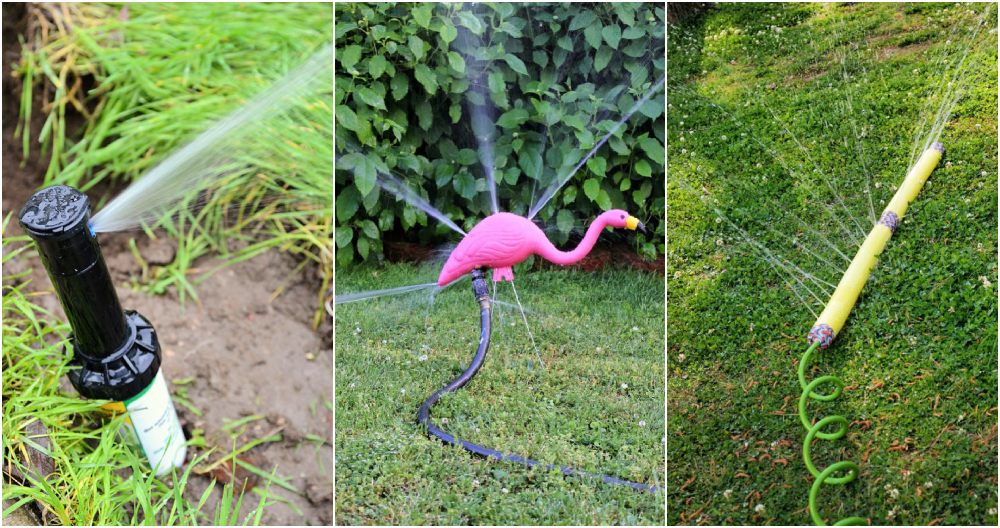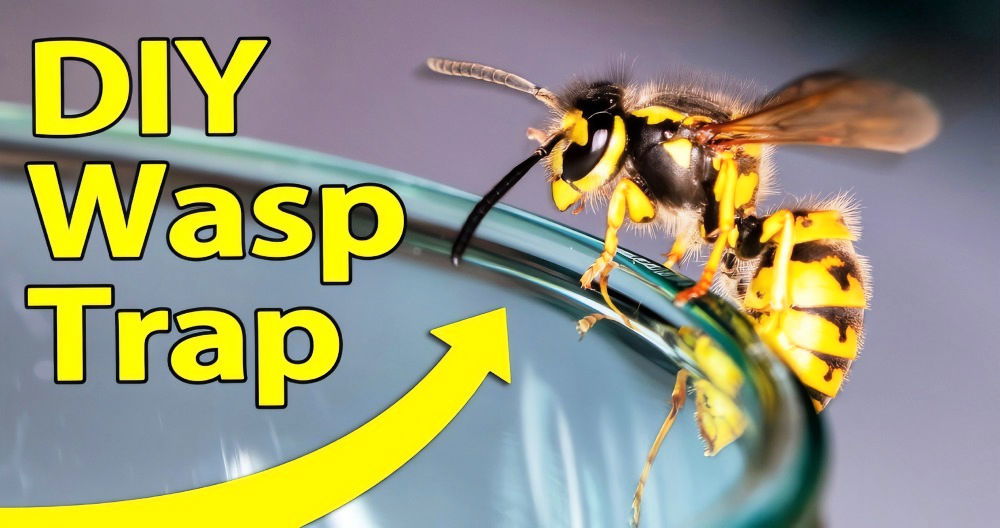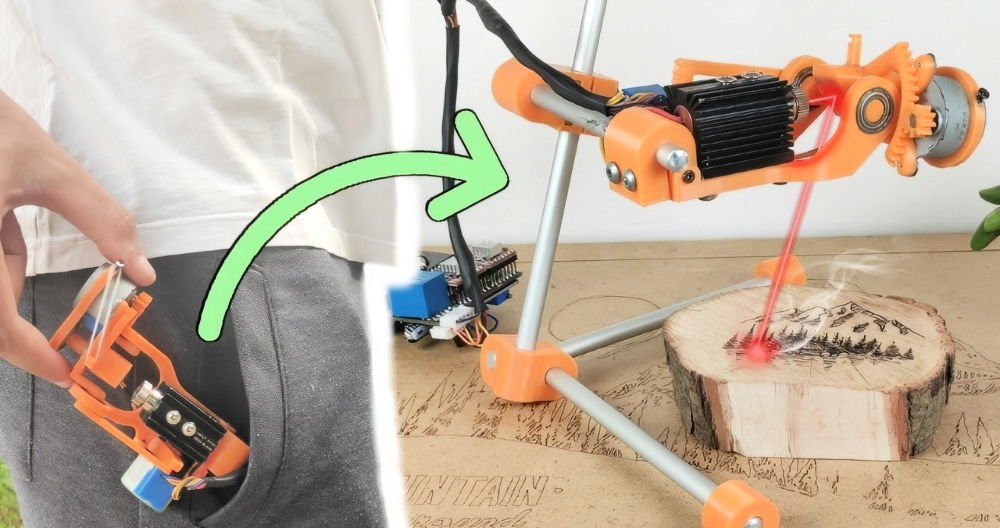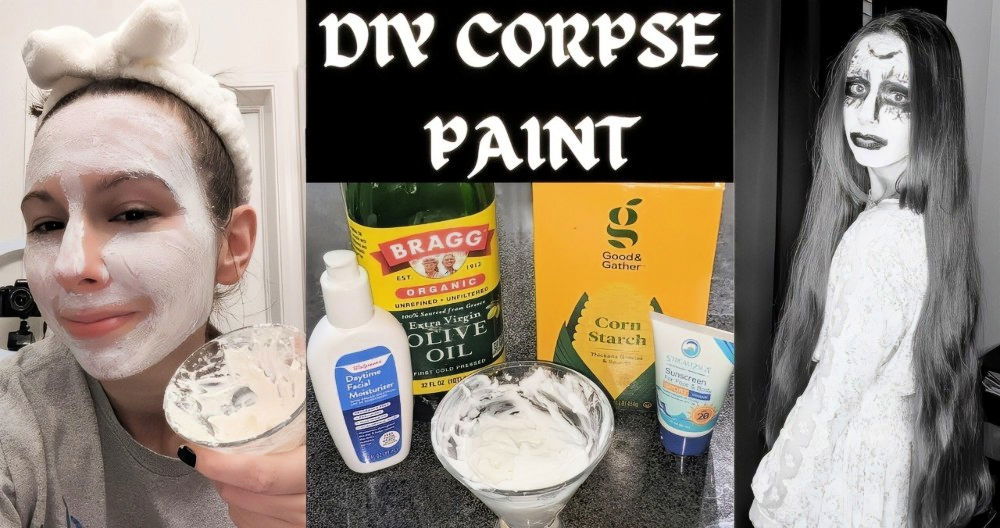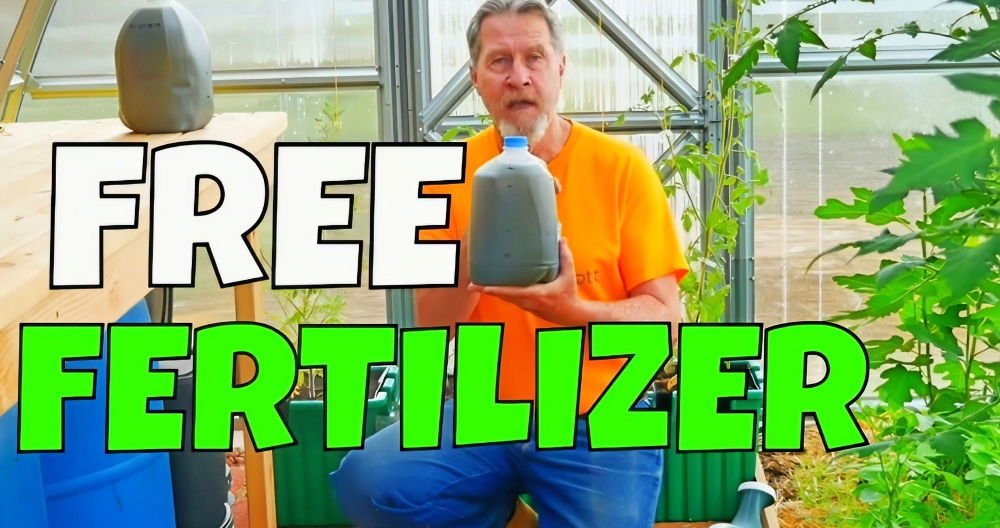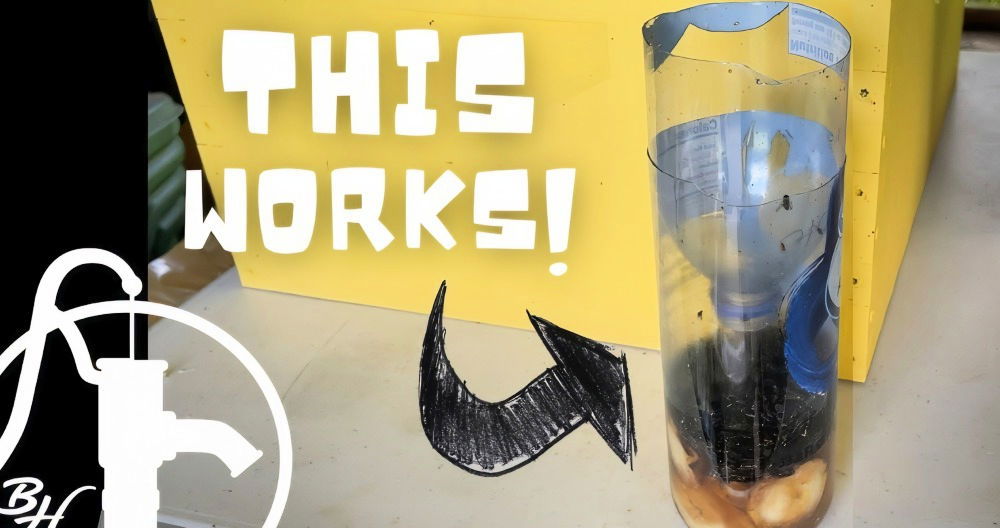Castile soap is a versatile, gentle, and natural soap traditionally made with 100% olive oil, making it ideal for sensitive skin and various household uses. In this guide, we'll cover a comprehensive, step-by-step method for making your own DIY liquid Castile soap at home, using a simple recipe that yields a beautiful, effective soap. If you're new to soap-making, this tutorial is a great place to start. Let's dive in!
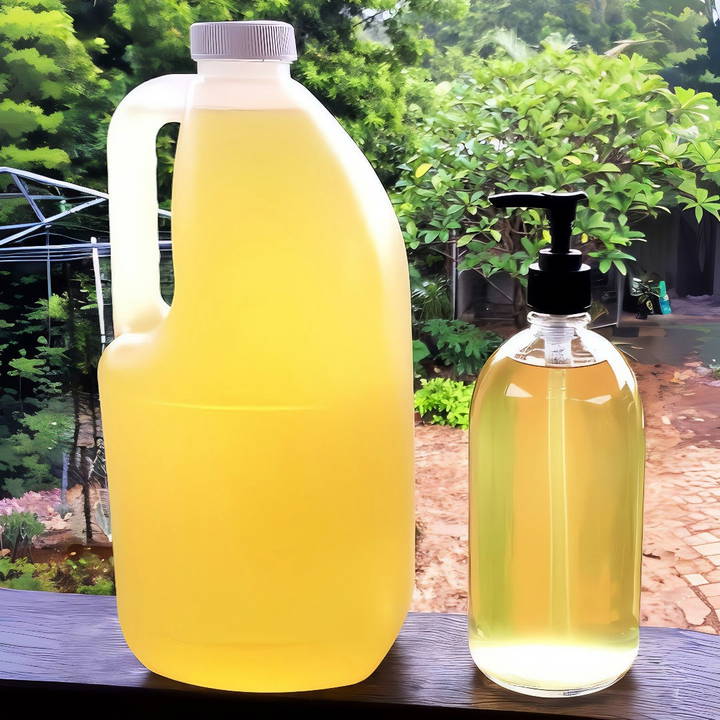
What Is Castile Soap?
True Castile soap is made exclusively with olive oil, giving it a gentle, moisturizing quality ideal for face and body washes, as well as general household cleaning. Unlike many commercially labeled "Castile" soaps, which may include coconut or palm oils, this recipe stays true to the traditional formula. Because of its natural ingredients, Castile soap is biodegradable, making it a sustainable choice for those looking to reduce chemical use at home.
Ingredients and Tools You'll Need
To make Castile soap, you'll need just four basic ingredients, along with a few essential tools. Here's what you'll need to get started:
Ingredients
- Olive Oil: The primary ingredient, providing the gentle, moisturizing quality of Castile soap.
- Distilled Water: Use distilled or demineralized water to ensure purity and avoid mineral residues.
- Potassium Hydroxide (KOH): This is the type of lye used for liquid soap (not to be confused with sodium hydroxide, used for bar soaps).
- Glycerin: A humectant that accelerates the saponification process and adds moisture-retaining qualities to the soap.
Tools
- Crockpot (slow cooker): A 3-liter slow cooker is ideal for this batch size.
- Stick Blender: Essential for achieving a smooth texture.
- Protective Gear: Gloves and goggles to protect yourself when handling potassium hydroxide.
- Measuring Scale: For accurately weighing each ingredient.
- pH Test Strips: To ensure your soap is fully saponified.
- Distilled Water Spray Bottle (optional): Useful for clearing bubbles during the clarity test.
Safety First: Handling Potassium Hydroxide
Before you begin, make sure you're well-informed on safety when handling potassium hydroxide. This substance is caustic and requires proper safety precautions:
- Always wear gloves and goggles.
- Work in a well-ventilated area.
- Add potassium hydroxide to water, not the other way around, to avoid a potential reaction.
Step by Step Instructions
Learn how to make castile soap with step-by-step instructions from preparation to final storage for a perfect and customizable soap batch every time.
Step 1: Prepare Your Ingredients
- Measure Your Olive Oil: Place the crockpot on a stable surface and add your measured olive oil directly into it. For this recipe, you'll need a specific amount of olive oil, based on your desired batch size.
- Prepare the Lye Solution: Carefully measure 104 grams of potassium hydroxide and 156 grams of distilled water. Slowly add the potassium hydroxide to the water and stir until fully dissolved. Be cautious, as the solution will become cloudy at first before clearing up.
- Add Glycerin: Measure 104 grams of glycerin and add it to the lye solution. Glycerin speeds up the process, helping the mixture reach trace faster and promoting a smoother, stable soap texture.
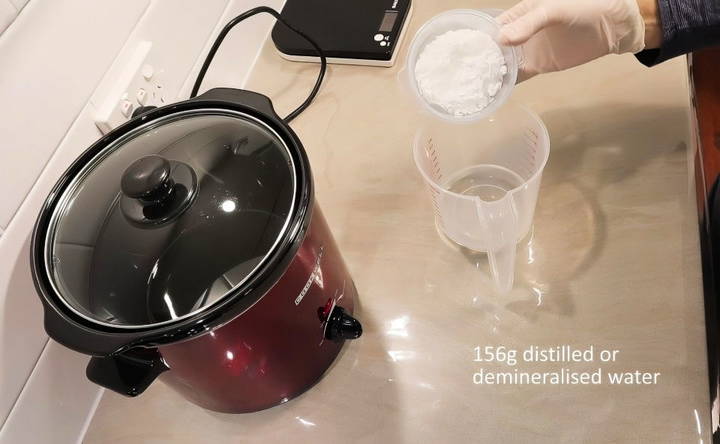
Step 2: Heat the Oil
Turn on the crockpot to its high setting. Allow the olive oil to warm up. This step helps prepare the oil for the saponification process by raising its temperature, aiding in the soap's texture and consistency. The target temperature is between 70–80°C (158–176°F).
Step 3: Mix the Ingredients
- Combine the Oil and Lye Solution: Slowly pour the lye solution into the warm olive oil in the crockpot. Be cautious, as this mixture can heat up quickly.
- Blend to Trace: Use the stick blender to mix the ingredients, aiming for a pudding-like texture. The mixture may separate initially, but continue blending in intervals until you achieve a smooth, thick texture. This may take up to 10 minutes, so be patient and allow breaks to avoid overheating the blender.
- Achieve Emulsification: As you blend, the color will shift from yellow to a creamy, opaque appearance. This change indicates the start of emulsification, which is key to a stable, non-separating soap.
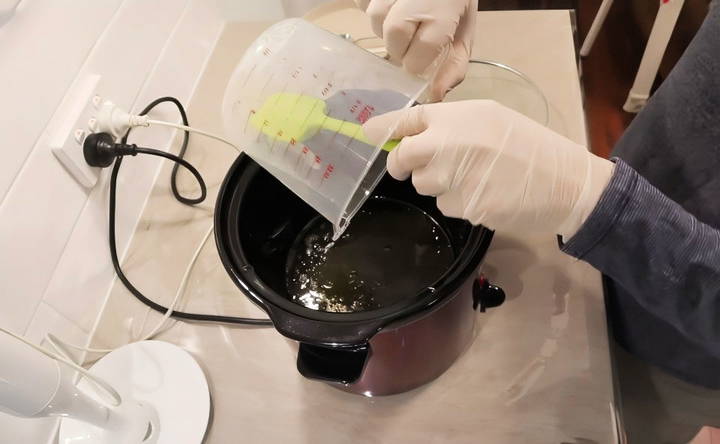
Step 4: Cook the Soap
- Set the Crockpot to Low: Once the mixture reaches a thick, pudding-like texture, lower the crockpot setting to “low” or “keep warm.” This step ensures the soap cooks at a moderate temperature, preventing it from becoming too hot and potentially causing a soap volcano.
- Allow the Soap to Cook: Let the soap cook undisturbed for 20–30 minutes, checking every 10 minutes to ensure the temperature remains stable. Aim to keep the temperature around 78°C (172°F).
- Check for Translucency: After about 30 minutes, the soap should have a translucent, Vaseline-like appearance. This look confirms that the paste is fully saponified and ready for dilution.
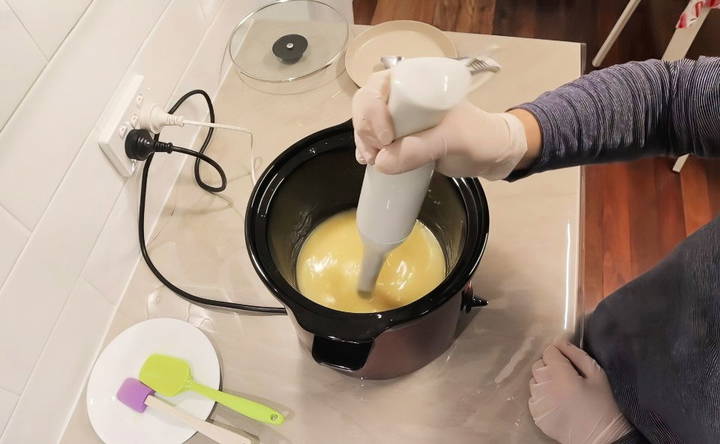
Step 5: Test the Soap Paste
- pH Test: To ensure your soap is safe for use, check the pH by dabbing a small amount of paste with distilled water onto a pH strip. A reading of 8–9 indicates it's safe and fully saponified.
- Clarity Test: Dilute a small portion of the paste in distilled water and check for clarity. If it appears clear (without bubbles or cloudiness), your soap is ready for dilution. You can use a spray of isopropyl alcohol to clear any surface bubbles if needed.
Step 6: Dilute the Soap Paste
- Add Dilution Water: For dilution, add about 1.8 kilograms of distilled water (approximately two parts water to one part paste). This ratio can be adjusted based on your preferences and the specific characteristics of your olive oil batch.
- Allow for Full Dilution: Keep the crockpot on low, allowing the soap paste to dissolve over several hours. Stir occasionally and use the stick blender if necessary to achieve a smooth consistency.
- Monitor Consistency: The soap may appear runny while warm, but it will thicken as it cools. If you prefer a thicker consistency, try using extra virgin olive oil, as it tends to produce a thicker soap.
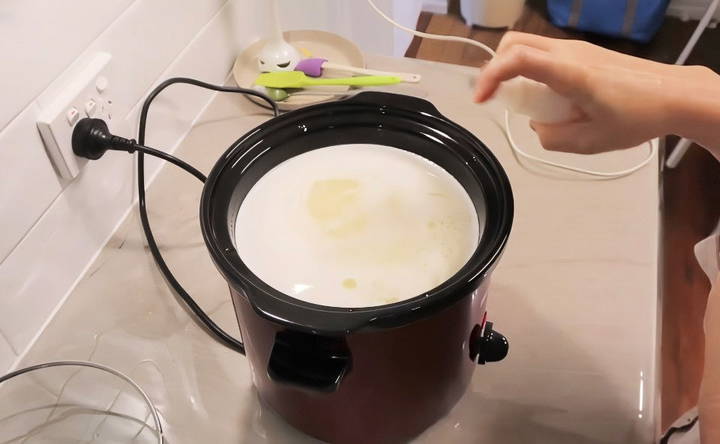
Optional Steps for Customizing Your Soap
- Add Essential Oils: If you wish to add fragrance, consider adding essential oils like lavender or tea tree. Be mindful that some oils may further thicken the soap, so adjust the dilution accordingly.
- Use a Salt Solution for Thicker Soap: If you're not adding essential oils, you can thicken the soap by adding a salt solution. Mix salt in water and add it gradually until you reach the desired thickness.
Storing and Using Your Castile Soap
- Bottling: Pour the cooled soap into clean, airtight bottles or dispensers. A 2.7-liter batch should yield ample soap for months of use.
- Usage Ideas: Castile soap is versatile and can be used for handwashing, as a gentle face wash, or even as a mild household cleaner. Avoid using it for laundry, as it may not perform well on heavily soiled clothes.
Tips for a Successful Castile Soap Batch
- Don't Overheat: Keep an eye on the temperature throughout the process. Overheating can lead to separation or even bubbling over.
- Be Patient During Dilution: Complete dilution can take a few hours. Be sure to mix gently to avoid excess foam.
- Adjust to Your Preference: Whether you prefer a thicker or thinner soap, you can adjust the dilution process to achieve the consistency that works best for you.
Final Thoughts
Making Castile soap at home is a rewarding experience that gives you full control over the ingredients and final product. With this guide, you're now ready to make a high-quality, gentle liquid Castile soap that is suitable for sensitive skin and sustainable cleaning.
FAQs About How to Make Castile Soap
Discover answers to frequently asked questions about how to make castile soap at home, including tips and benefits.
Traditional Castile soap is made with 100% olive oil. However, you can experiment with other oils, but the final product may lose its gentle, moisturizing qualities.
Use the pH and clarity tests as described above. A pH between 8–9 and a clear diluted mixture are good indicators.
You can add natural colorants like turmeric or mica, but they may affect the clarity and consistency of the soap. Experiment in small batches to find what works best.
The olive oil should be pre-warmed in the crockpot on high until it reaches around 70–80°C (158–176°F) before adding the lye mixture. This helps initiate the saponification process more effectively.
If the paste isn’t fully saponifying, extend the cook time while keeping the temperature steady. Ensure all ingredients are properly blended, and consider retesting the pH if issues persist.
Yes, but each oil has a unique saponification value. If you substitute, calculate the new lye amount using a soap calculator to ensure accurate measurements. Coconut oil or a mix with olive oil can be good alternatives.
Yes, distilled or demineralized water is recommended for dilution to prevent impurities that could cloud the soap. Using tap water may affect clarity and longevity.
Yes, but use very low heat and monitor the mixture closely to avoid overheating or scorching the soap paste. Slow cookers provide more consistent heat control for beginners.
Add essential oils after the soap has cooled slightly but before bottling. Essential oils can thicken the soap, so adjust the dilution if necessary.
Unlike bar soap, liquid Castile soap doesn’t require curing and can be used right after it’s diluted and bottled.
If stored in a clean, airtight container, it can last for up to a year. Avoid adding extra water directly to the container after initial dilution to prevent microbial growth.
This recipe is too mild for laundry purposes. For laundry, it's better to use a stronger soap formulation or soap granules specifically designed for cleaning clothes.



